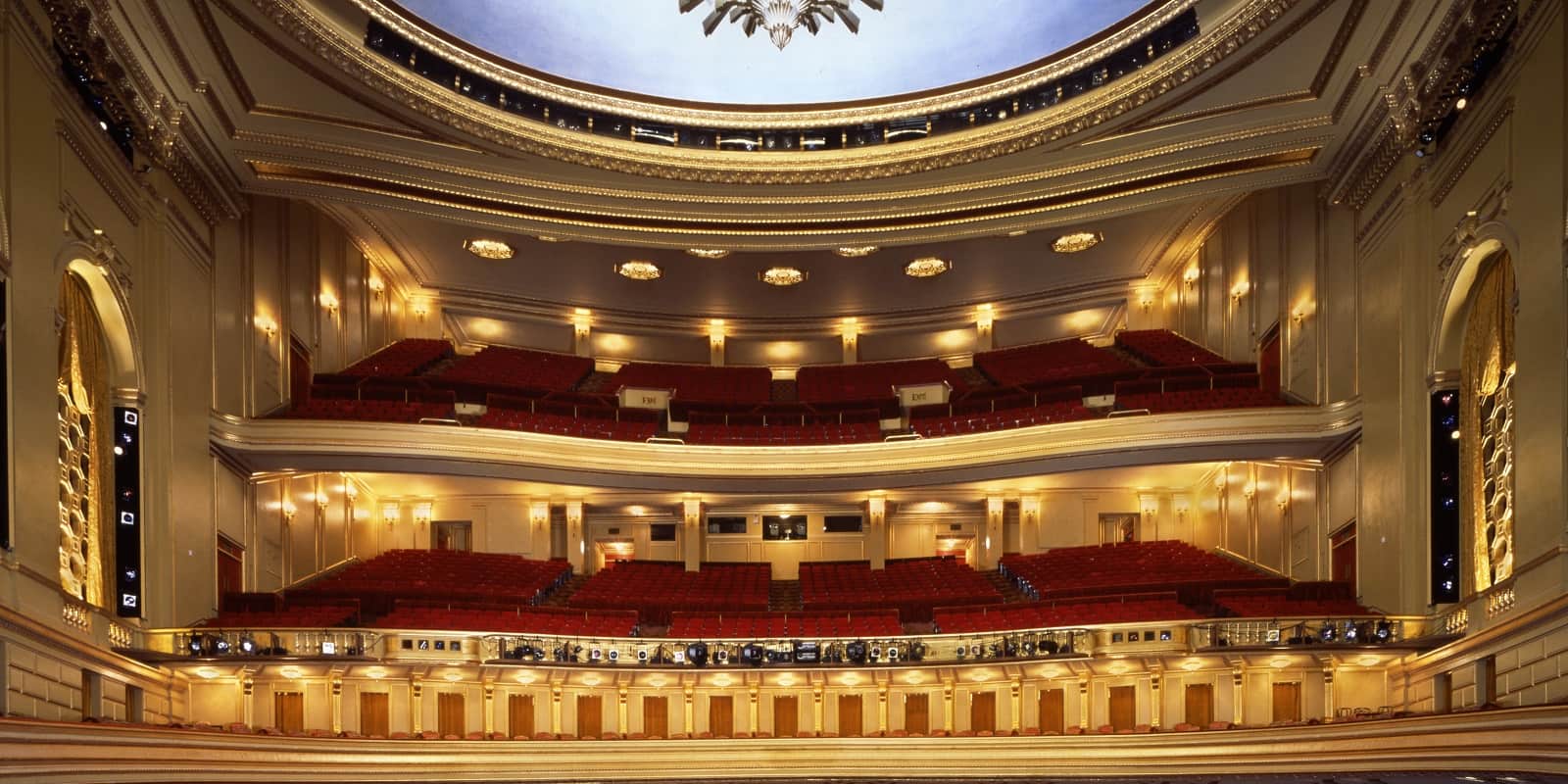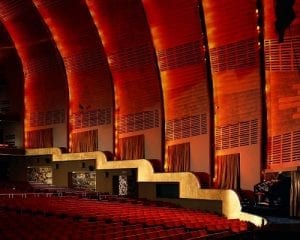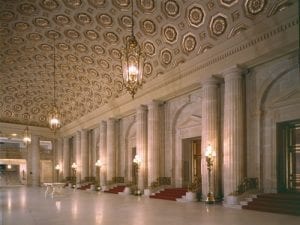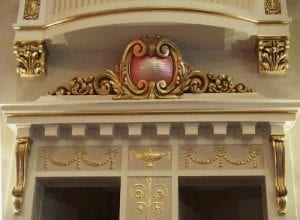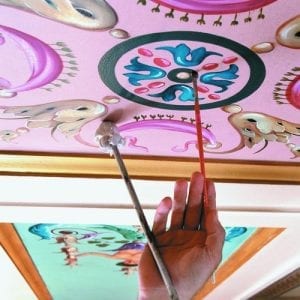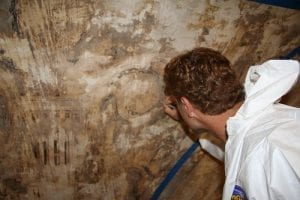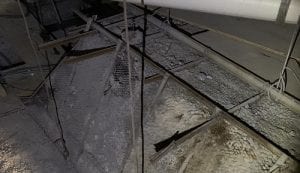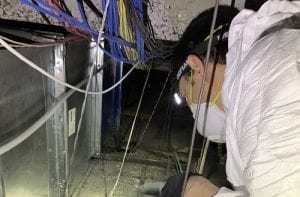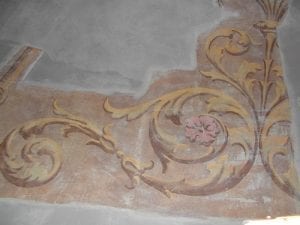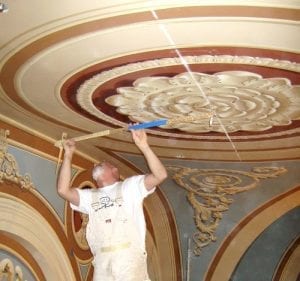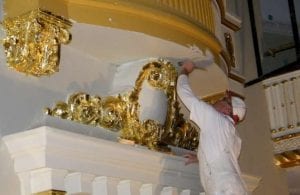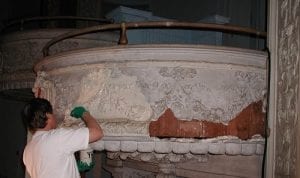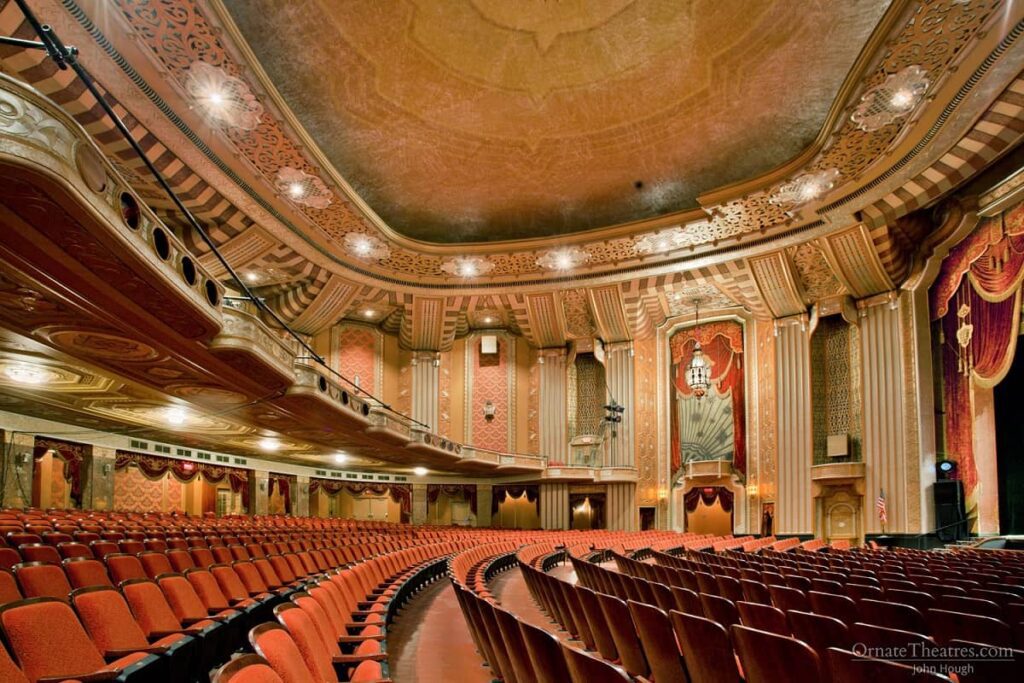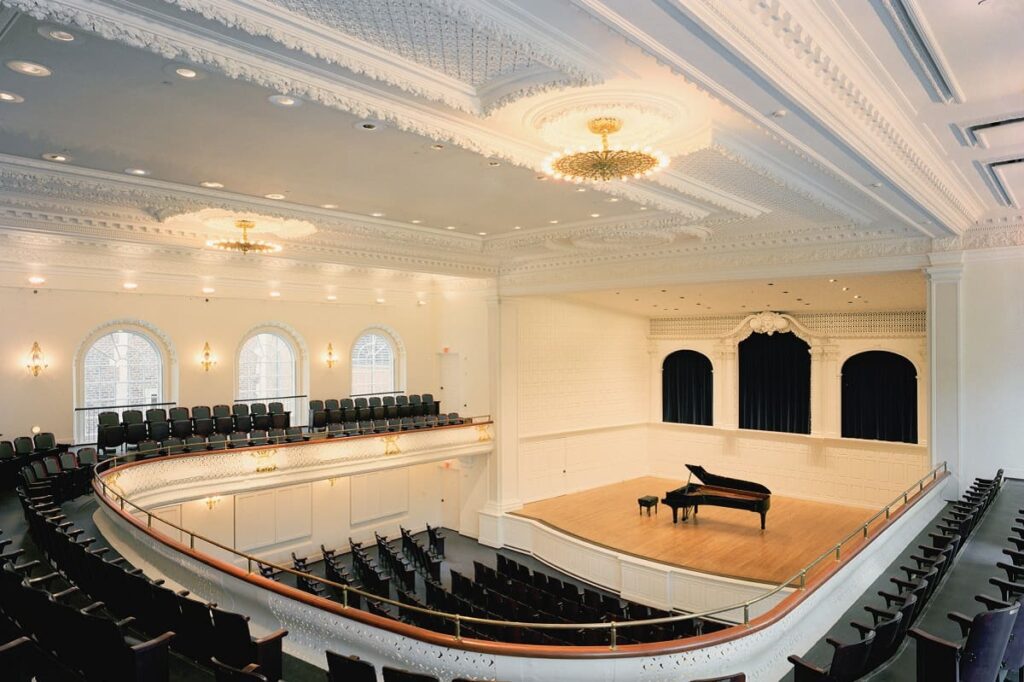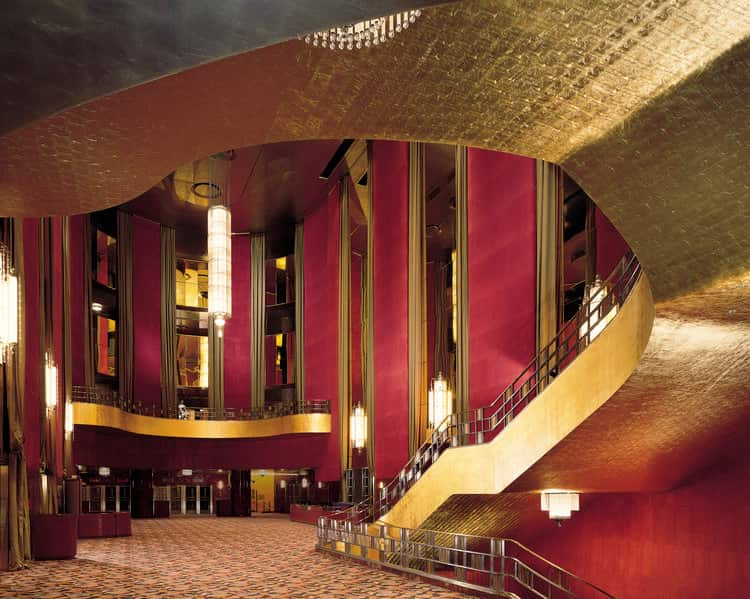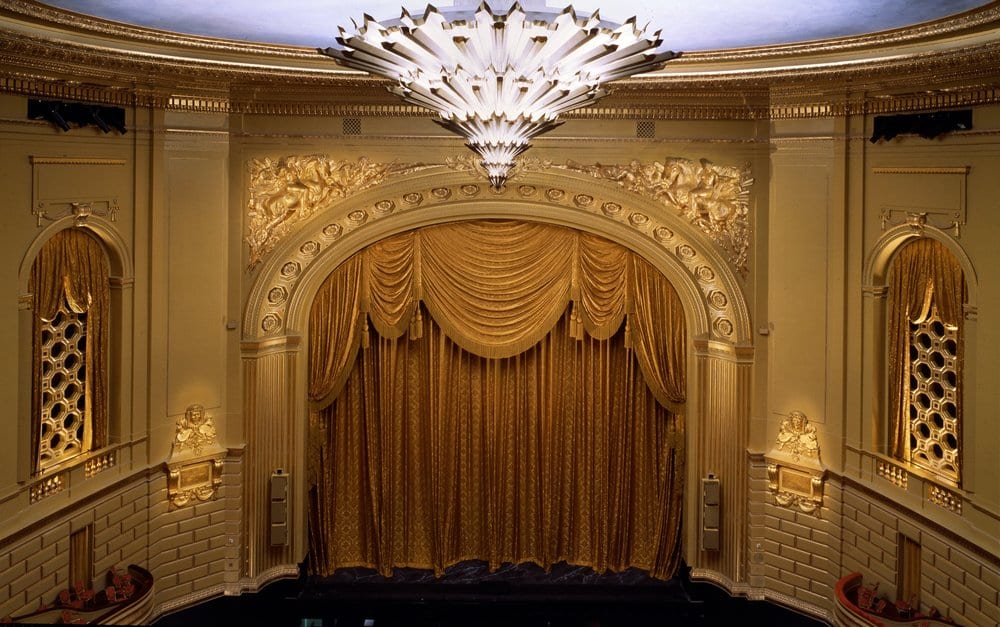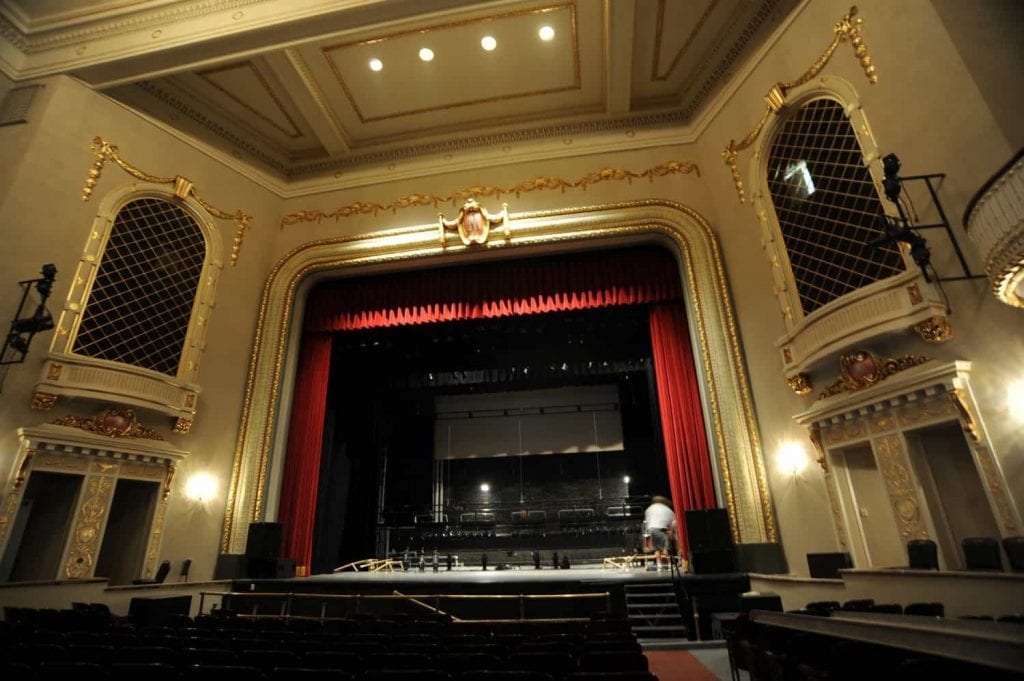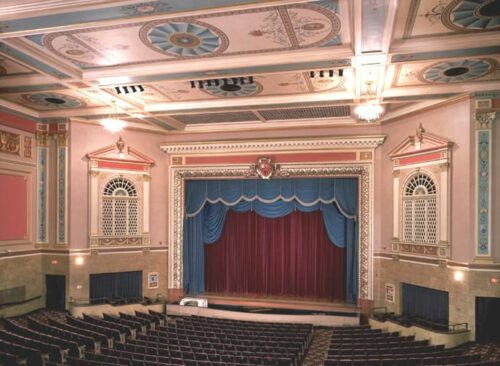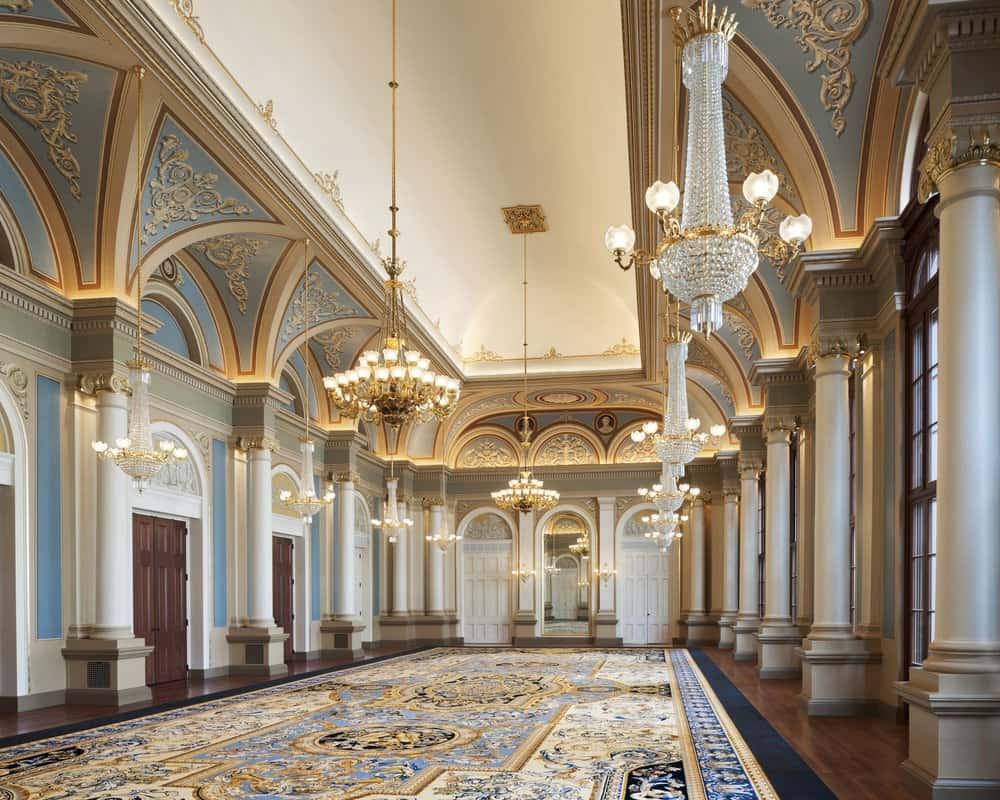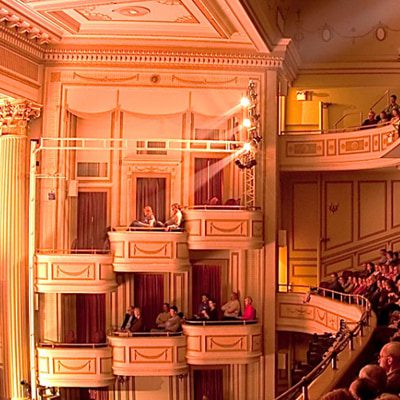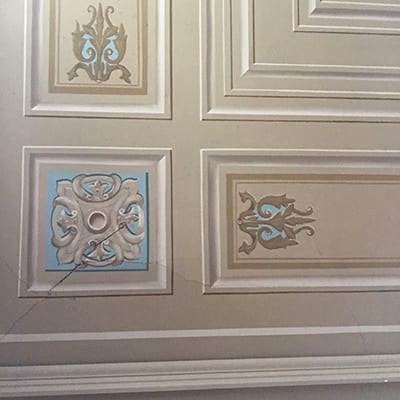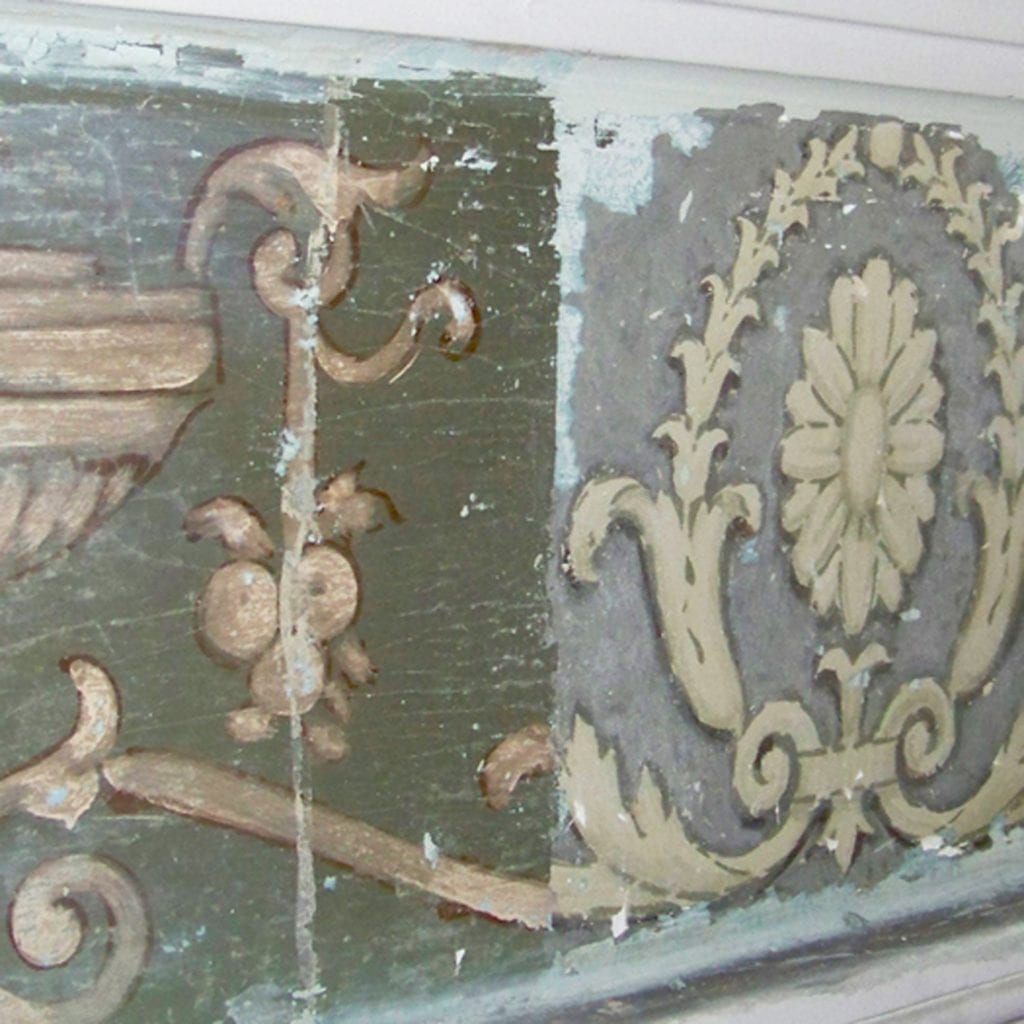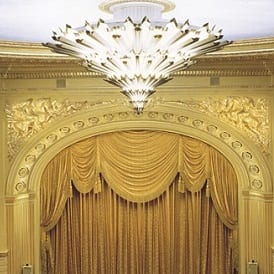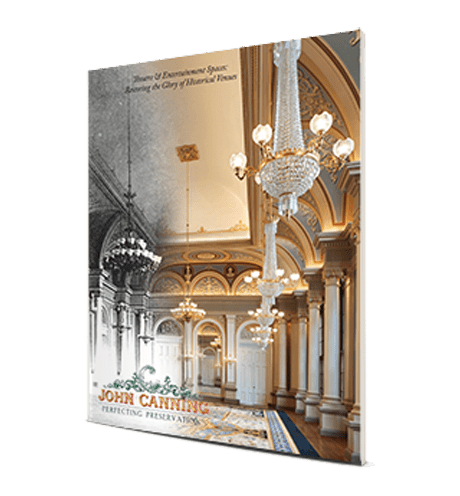Lights start to flash on and off signaling the audience to find their seats. The grand room begins to dim, the music goes quiet and a hush falls over the crowd as murmurs become more and more faint. The show is about to begin. Anyone who has been to a live performance understands the excitement of this moment. The space in which the performance takes place is extremely important as it increases the excitement, awe and wonder to a great extent. The grand stage, the lights, the elaborate ornament and intricate detail surrounding the balconies, doors and windows — all inspire fantasy and eager anticipation of the show to come. Like any architectural structure, the décor of a theater is a fundamental contributor to its integrity, and together with the architecture serve the purpose of the building.
Why Restore Historic Theatres?
Theatres have been valued and cherished since ancient Greece and Rome and, despite the advanced technology used for entertainment today, people still love to go to the theatre-to witness a live performance in a grand space. Proof of this is seen everywhere in dramatic organizations such as the League of Historic American Theatres dedicated to keeping historic theatres sustained and available. It is important to properly conserve and restore the decorative and architectural elements of historic theatres so that they may continue to bring people together and provide them with fantastical and dramatic entertainment.
Process
With a focus on the decorative elements, there are seven steps to historic theatre restoration.
1. Understand the History of Your Theatre & Their Common Decorative Elements
First, it is important to be familiar with the history and architecture of your theatre. This often involves having an idea of the progression of theatrical styles of each time period as well as common decorative elements of those styles. This will help to determine the style of your theatre and its important elements. Uncovering the history of the theatre along with historic photographs, news articles, and historic maps can be a valuable tool going forward in the restoration steps. Answering questions like who designed it, who built it, what changes have been made over the years etc., all help guide and inform a design/ preservation project’s process. Valuing the history and true intent of the original architect and builders is why this first step very important.
Common Decorative Elements of Historic Theatres
The decorative elements of historic theatres make up an extensive list. Some of the most common are plastering, gilding, polychroming, decorative painting, stenciling, and wood graining.
Plaster
Plaster is a mixture of lime or gypsum, sand, and water which hardens into a smooth solid when dried. It is used for coating, protecting, and decorating walls and ceilings as well as creating architectural moldings. There are three basic types of plaster: ornamental, flat, and acoustic. Ornamental plaster is poured into a mould in order to create a particular decoration which is then applied to an architectural feature. Flat plaster is applied uniformly over a surface in order to provide protection and a smooth aesthetic. Acoustic plaster contains fibers which absorb sound. For this reason, it is used in spaces which require good acoustical qualities which is very common in theatres.
John Canning & Co. performed detailed plaster restoration on the Morse Recital Hall which is the primary performance space at Sprague Hall, Yale University. The project’s scope included a plaster conditions analysis and repair and restoration of the plaster as well as ornamental plaster fabrication.
Gilding
The gilding process, that of applying metal leaf to a surface, is very popular in theatre ornamentation and is a technique in which John Canning & Co. is very experienced. In lieu of gilding, and as a cost saving measure, bronze powders, can also be employed.
The company was privileged to gild and glaze the interior of Radio City Music Hall, a registered landmark, the War Memorial Opera House within the War Memorial Performing Arts Center, and many other gilding restoration projects.
Decorative Painting and Stenciling
Decorative painting and stenciling are used on walls, ceilings, and other architectural elements in the forms of murals, Trompe L’oeil, friezes, frescos, and more.
John Canning & Co. provided general and decorative painting on the Metropolitan Theatre, a National Historic Landmark, in Morgantown, WV as well as Stadium Theatre in Woonsocket, RI and Philadelphia Academy of Music.
Wood Graining
Woodgraining is a type of decorative painting used to resemble the aesthetic of authentic wood.
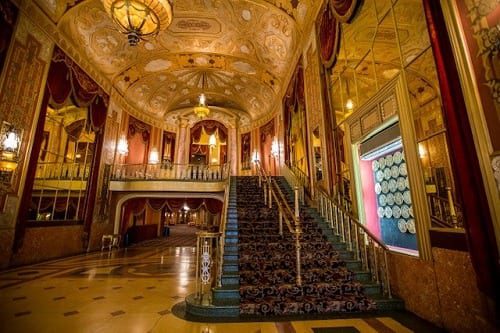
The Warner Theatre in Erie, PA was restored by John Canning & Co. whose work included detailed woodgraining.
2. Assemble Your Team
In order to restore your theatre properly and efficiently, it is absolutely essential to have a competent and experienced team involved. Assembling the team starts by choosing an architect and historic restoration/theatre consultant to start the process and give guidance along the way. Most importantly, consulting a trustworthy studio specializing in the decorative arts is key since typically the bulk of the work to be done will be decorative. The decorative arts consulting team should have the ability to analyzes both in the field and in the laboratory through a historic paint investigation in order to determine specific colors and materials that ought to be used in the restoration. We touch more on the investigation in the next step. The method of choosing the correct team members will involve interviews, reviewing qualifications and site visits to the theater. As you advance through the remaining steps for historic theater restoration, your team will expand to fit the needs of your restoration project.
3. Determine the Scope
Next, understanding the scope of the project is necessary. This includes assessing the building and elements in order to anticipate and plan for conservation, restoration and preservation needs. This step can be accomplished through executing a historic building conditions assessment and paint investigation in which the present condition of all elements in the theatre and the priority of repair among them are documented. There are a lot of questions that need to be answered during this step. Are there signs of failing decorative elements such as paint delamination or deteriorating plaster? Have decorative elements been painted over, is this the original paint campaign and is that something that needs to be addressed? Is the theatre in need of conservation cleaning or plaster consolidation? Which elements are in need of specific attention and care? Does further analysis of specific elements need to be performed, requiring paint investigation that may include a historic paint analysis or plaster conditions survey.
The purpose of conducting a historic paint analysis is to reveal, discern and document the original and subsequent decorative paint campaigns in selected areas of the theatre. These discoveries are then interpreted to form an understanding of the original overall decorative design intent. The documented findings and interpretations serve as the basis for recommendations on how to reinstate the original decoration, and for the development of related projected costs.
Plaster surveys are conducted to identify the extent of plaster damage, which helps in preparing a budget for plaster restoration work.
Once any necessary assessments and investigations are complete and the scope is determined, phases of the overall project can be planned accordingly.
4. Establish a Budget
After determining the scope, the next step is to establish a budget. It is important to consult a professional restoration team with in-depth knowledge and experience in the defined scope areas in order to establish a proper budget. Along with the budget, the basic project schedule/time frame of the work will be established which will be helpful if some of the work needs to be planned around production/show schedule. Depending on the scope of the work and the budget, the project might have to be planned out in phases over years.
5. Fundraise
After the budget is established, the fundraising can begin. There are great resources to help in general fundraising efforts such as the League of Historic American Theatres. During this step, the theater might also want to explore the possibility of historic tax credits. Figuring out if your project qualifies is a huge help, the benefits and impacts of which can be answered best by a service provider that specializes in historic tax credits. Theaters can also enhance fundraising efforts through the use of detailed water color renderings and mockups of what the theatre will look like after restoration. These services greatly aid the community residents, organizations, and donors in understanding the difference they can make through their generosity and support. These renderings and mockups can also be used in the fundraising marketing campaign across all media (website, print materials, newspaper articles, and social media).
6. Write Specifications, Receive Qualifications and Bids/Proposals (RFQ/RFP)
A work specification is a detailed document describing the scope, treatment method, materials, and any concerns within a given project. This is done for each element in need of restoration i.e., a plaster specification, a gilding specification etc. The specifications are written after the building has been properly assessed and, although usually written by architects, restoration contractors with the required knowledge and expertise can be a huge help in this step. In the specifications it is also important to list the minimum qualifications that are required to perform the work. Once the specifications are determined, the project is put out for restoration contractors to bid on it. In the bidding process, a restoration contractor will supply qualifications, consisting of project examples from their past work as well as the number of years’ experience they have in that trade to show that they are qualified for the job. The bidding contractors will also supply a proposal for the project which states what work will be performed and the cost to perform that work. Depending on the qualifications and bids received, it is important to choose the right contractor for the job, one who can be wholly relied upon to get the job done well.
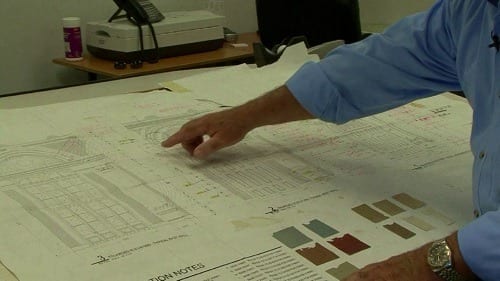
7. Implement Restoration
Having completed all preparation, the historic theatre restoration can commence. In accordance with the surveys and assessments, proper action to preserve, restore, and replicate the desired elements is implemented. It is vitally important to hire a competent team in order to efficiently and properly achieve the desired effect. Finding contractors that are thoroughly experienced in conducting the proper action to accomplish each of these steps is key to a successful project.
Now that the proper action has been diligently planned and executed, your theatre is ready to be admired and enjoyed!
Theatres are timeless–they will never permanently go out of style and for hundreds of years have been held in great esteem. Although the live performance is what primarily draws an audience, the theatre in which it takes place greatly contributes to this attraction by heightening the excitement, fantasy, and wonderful anticipation. For this reason, it is important to take the proper steps to conserve and restore historic theaters all over the world.
If you have a project you would like to discuss, please contact us.

